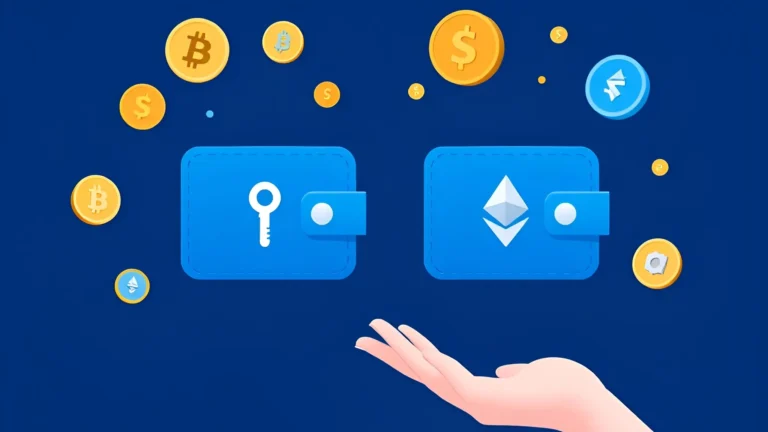Can Quant Reach $50,000?
Quant’s QNT token hitting $50,000 is a bold aspiration, with expert forecasts ranging from $148.88 to $1,075 by 2030.
Achieving this requires Overledger to dominate interoperability, secure transformative partnerships, and navigate favorable regulations amid a crypto super-cycle.
This article analyzes catalysts, risks, and market dynamics to assess QNT’s potential for such an extreme valuation.
Key Takeaways:
Hide- StealthEX: Highlights the massive adoption and capital influx required for QNT to breach even $10,000, let alone $50,000. (Source: StealthEX)
- DigitalCoinPrice: Projects Quant at $457–$530 for 2030, underscoring the disparity between realistic models and $50,000 targets. (Source: DigitalCoinPrice)
- Changelly: Sees a 2025 peak near $148.88, providing the current low end of expert projections. (Source: Changelly Blog)
- CoinLore: Sets an optimistic 2030 ceiling around $1,075—still orders of magnitude beneath $50k. (Source: CoinLore)
Is $50,000 Feasible for Quant (QNT)?

Quant (QNT) reaching $50,000 demands an unprecedented convergence of factors. Below, we explore Overledger’s adoption, market sentiment, regulatory landscape, competitive pressures, and tokenomics to evaluate this ambitious target.
Market Sentiment and Crypto Cycles
Crypto markets thrive on narrative-driven rallies. QNT needs to outperform altcoins in a sustained bull run, capturing retail and institutional attention.
Viral momentum and influencer support could amplify enthusiasm, but euphoria often leads to sharp corrections.
Sustained growth requires consistent real-world wins to maintain investor confidence through volatile cycles.
Overledger’s Technological Dominance
Overledger must become the global standard for interoperability:
- Scalability and Security: Processing 10,000 Txs/sec with zero downtime and bulletproof security is essential to attract enterprises.
- Developer Appeal: Superior APIs must drive a 500% dApp surge by 2030 to rival legacy systems.
- Innovation Edge: Overledger must outpace Polkadot, Cosmos, and Chainlink in performance and compliance.
Failure to maintain a technological lead could cap QNT’s growth.
Adoption and Strategic Partnerships
QNT needs transformative integrations:
- CBDCs and SWIFT: Adoption by central banks or SWIFT for cross-border payments could drive a 300% transaction volume spike.
- Enterprise Use Cases: Walmart or banks using Overledger for supply chains or settlements, cutting costs by 20%, would boost QNT demand.
Real, production-level integrations are critical to justify a $600 billion market cap.
Regulatory and Security Imperatives
Favorable regulations and robust security are non-negotiable:
- Regulatory Clarity: Supportive U.S., EU, and Singapore policies by 2028 could unlock institutional capital.
- Security Record: Continuous audits and a $100M bug bounty program are vital to prevent trust-destroying exploits.
Macro and Competitive Dynamics
Global liquidity and competition shape QNT’s path:
- Macro Environment: Low rates and stimulus could fuel crypto rallies, but rising rates may divert capital to safer assets.
- Competition: Polkadot, Cosmos, or Chainlink gaining enterprise traction could limit QNT’s market share.
Tokenomics and Scarcity
QNT’s ~12 million token supply supports price growth:
- Scarcity Pressure: 70% token lock-ups for licensing could shrink circulation.
- Token Burns: A 5% annual burn from fees could amplify scarcity.
Price Prediction
QNT’s path to $50,000 includes:
- Bullish Scenario (Low Probability): If Overledger dominates CBDCs and SWIFT by 2030, $50,000 is conceivable by 2040.
- Moderate Scenario (Most Likely): Steady adoption may reach $1,000–$2,000 by 2035, with $50,000 beyond 2050.
- Bearish Scenario (Possible): Stalled adoption or regulatory hurdles could cap QNT at $500–$1,000 through 2030.
A balanced target is $1,000 per QNT, up to $2,000 by 2035, with $50,000 a distant outlier.
Considerations for QNT Investors
To navigate QNT’s volatile path, investors should:
- Limit Exposure: Cap QNT at 5–10% of your crypto portfolio to manage risk.
- Track Adoption: Monitor dApp growth, transaction volume, and enterprise integrations.
- Demand Audits: Ensure Overledger undergoes rigorous security checks to avoid exploits.
- Follow Regulations: Stay updated on U.S., EU, and Singapore policies.
- Compare Competitors: Evaluate Polkadot, Cosmos, and Chainlink quarterly.
- Avoid Leverage: Steer clear of short-term leverage to prevent liquidations.
Can Quant Hit $50,000?
QNT reaching $50,000 requires Overledger to become indispensable for CBDCs, SWIFT, and enterprises, supported by token scarcity and regulatory clarity.
A $600 billion market cap demands unprecedented adoption and a crypto super-cycle. Competitive pressures, security risks, and macro headwinds pose significant hurdles.
Expert forecasts cap QNT at $148.88–$1,075 by 2030, far from $50,000. A realistic target is $1,000–$2,000 by 2035, with $50,000 a speculative dream beyond 2050.
Investors must approach with realistic target such as $500 per QNT, also cautious optimism, rigorous monitoring, and disciplined risk management.






